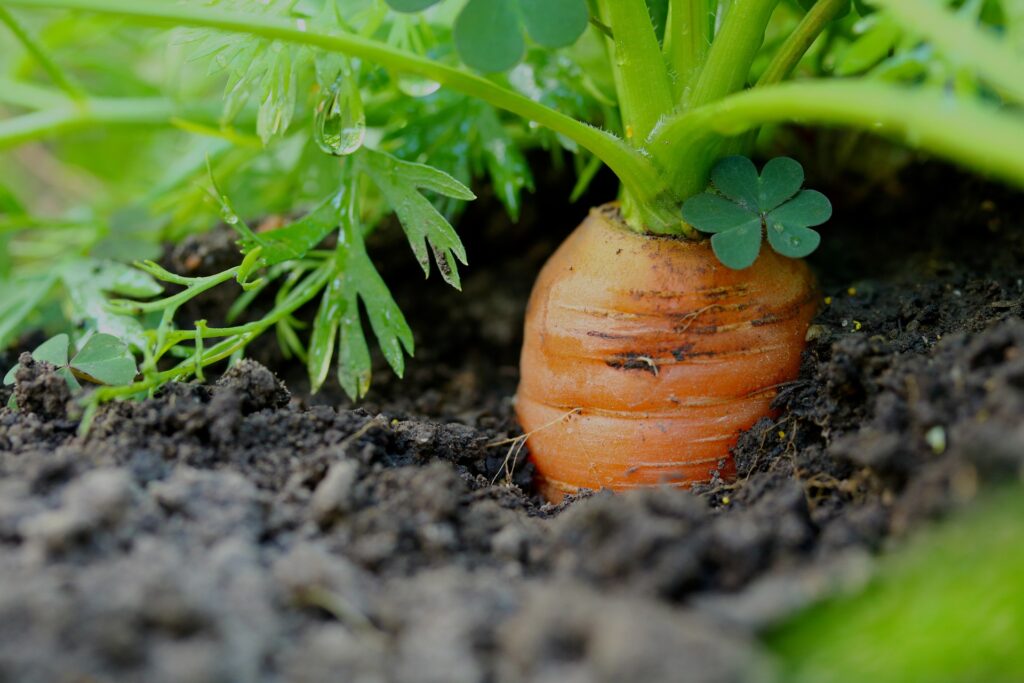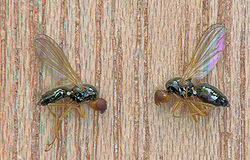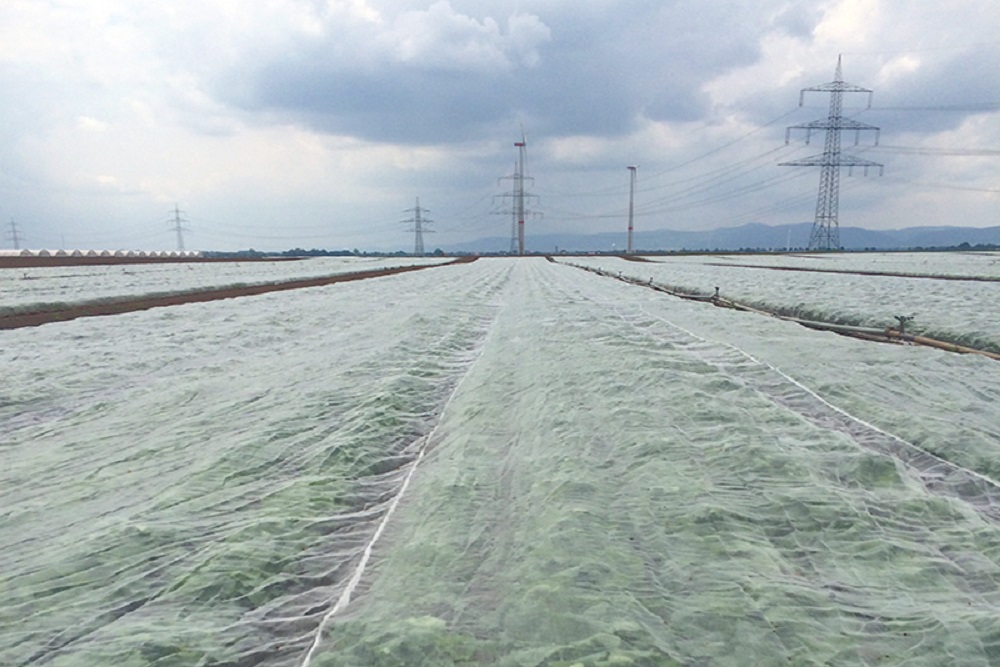We use cookies to make your experience better. To comply with the new e-Privacy directive, we need to ask for your consent to set the cookies. Learn more.
Carrot Root Fly

Organic Carrot Root Fly Control
The carrot root fly (Psila rosae) is responsible for much grief amongst home gardeners and commercial growers alike. It is partial to dining on a number of vegetables in the Apiaceae, or carrot, family of plants. It can affect parsnip, parsley, celery and celeriac but is most notorious for reducing your carrot crop to an inedible mess. Carrot fly is a small black-bodied fly which lays its eggs near the base of carrot plants. The larvae then hatch out and feed on the roots as they burrow into them. Sometimes the foliage turns reddish brown. The crop is largely inedible and will rot in storage.
Understanding the Carrot Root Fly
Adult flies are about 8mm long, shiny black with a reddish head, orange legs and transparent wings. The females are attracted to the host plant by its odour and between late April and August they lay their eggs beside them. The larvae, which do the damage, emerge a little while after. They are 8-10mm long and creamy-white in colour. Adult flies emerge from pupae in the soil, continuing the cycle if left unchecked. Flies lay between two to five times per season. As such, multiple overlapping generations can build up between late spring and autumn causing accumulating crop damage. The pest can also overwinter as larvae or pupae. Knowing this very basic biology of the fly is enough to help us plan our defense.

What can be done?
- Rotating and Removing - Never leave infected carrots in the soil overwinter to prevent a carry over to your next year's sowing. This applies to the other susceptible crops too. It is one of the reasons why crop rotation is so important in growing generally. Rotating crops help minimise the buildup of certain soil borne pests.
- Delay Sowing: Carrot root flies are most active in the spring and early summer. Delaying sowing until later in the season (late May-June), when fly populations have decreased, can reduce damage as less generations can accumulate. Additionally, early-maturing carrot varieties may escape the peak period of fly activity.
- Sowing and Harvest - Try and sow as lightly as possible to reduce the amount of thinning. Carrot fly operates by smell so be careful not to bruise the foliage. They are most active during the afternoon and evening so do your thinning/harvesting preferably in the morning. Though tempting to tuck into your carrots bit by bit, it could well be worth leaving them alone until a final big harvest. The fragrance of freshly pulled carrots might act like a siren to any flies in the neighbourhood.
- Plant and Soil Treatment - There are few treatment options for carrot flies with conventional growers even struggling to manage crops effectively with the use of pesticides. Tercol is a composition of herbal concentrates which aids in repelling harmful soil insects and their larvae. It is applied to the plants, in a liquid form usually, and is absorbed by the roots and soil. The result is twofold: the nutritional components stimulate the plants own resistance and the soil is made less attractive to pests, causing them to move to greater depths - away from the rootzone. It is most effective when used as a preventative measure before damage begins. You can also use AMN BioVit - a garlic concentrate which masks the smell of the carrot and is also a tonic so it will improve growth. Some commercial growers use sticky traps to monitor carrot fly activity so they know when they need to apply Tercol or AMN Biovit.
- Physical Barriers - Covering the plants completely with insect proof netting is definitely the most effective way to protect your crop. Though a little expensive, Bionet will last 8+ years so it is an investment for your garden. Adult carrot flies are more active during the afternoon and evening so it is best to weed in the morning and cover again with the Bionet.


